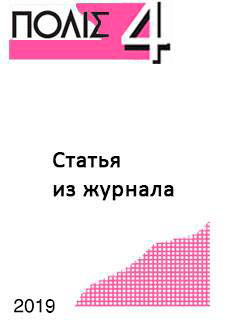Online shop of "Polis. Political Studies" Journal
We in the world, the world in us
Egorova-Gantman E.V., Egorova E.M. Character Assassination. Three Chronicles of the Soviet Period. – Polis. Political Studies. 2019. No 4. P. 165-180
Free!
character assassination, charismatic leader, political communication, foreign agent, Ad Hominem, guilt by association, name-calling, labeling, status reduction.
The article is the result of research into a kind of political communication poorly studied in Russia, which is very popular in actual political life – an attack on an opponent’s reputation with the goal of destroying it and depriving the opponent of support from significant target groups. A study of character assassination from the moment of the bourgeois revolution in Russia until the collapse of the Soviet Union shows the continuity of methods and techniques and the use of similar themes and subjects throughout this period. Public perception of character assassination in relation to the victims of the attack in general reflects the tendency of support of the head of the state, if the population recognizes him as the leader. The article discusses three cases showing the most important tendencies of character assassination in a certain historical period: the character assassination of Lenin as a German spy; the character assassination of Tukhachevsky and a group of military leaders as the organizers of the “military-fascist conspiracy”; and the character assassination of Sakharov as an anti-Soviet human rights activist. The notion of a “foreign agent” has become the umbrella element of all studied character assassination campaigns. These cases make it possible to see the behavior of the attackers and their victims, the main methods and topics used to kill the reputation, the use of various types of media, the reaction of society, ways to defense against the character assassination.
 English
English Русский
Русский

Reviews
There are no reviews yet.